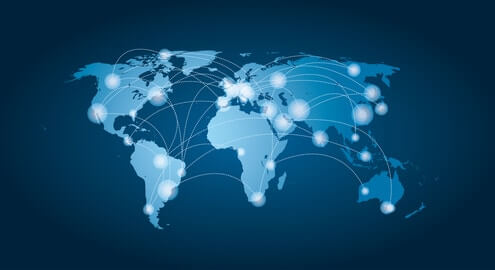
International Finance
International finance, also known as international macroeconomics, studies monetary intercommunications between several countries. It focuses on currency exchange rates and foreign direct investment.
KEY TAKEAWAYS
- International finance studies monetary intercommunications that occur between multiple countries;
- International finance mainly concentrates on fields such as currency exchange rates and foreign direct investment;
- Extended globalization increased the interest in international finance;
- The Bretton Woods system, an initiative, was developed at a conference in 1944 attended by 40 countries. It aims to regulate policies and international monetary exchanges in a more significant effort to sustain post-World War economic stability;
Understanding International Finance
The idea of International finance is to deal with the financial intercommunications between different countries instead of focusing only on particular markets. Large institutions conduct International finance research. Furthermore, those institutions include NBER – the National Bureau of Economic Research and IFC – the International Finance Corp. Moreover, the U.S. Federal Reserve created a division committed to examining policies relevant to U.S. capital flow, outer trade, and the expansion of global markets.
International finance examines the following specific fields of study:
- The Mundell-Fleming Model: analyzing the intercommunication between the money market and the goods market. It is based on the premise that price levels are fixed.
- International Fisher Effect: a global finance theory that assumes nominal interest rates reflect changes in the spot exchange rate between countries.
- The optimum currency field theory says that specific geographical regions could maximize financial efficiency if the entire field chose a particular currency.
- Purchasing power parity measures costs in different fields using a particular good or a particular collection of advantages to compare the total purchasing power between other currencies.
- Interest rate equality represents a phase in which investors are indifferent to interest rates.
Example of International Institutions of International Finance
The Bretton Woods System
At the Bretton Woods conference, attendees created the Bretton Woods system in 1944. At this conference, 40 participants from different countries agreed to set a fixed exchange rate policy. In fact, the common goal of this action was to regulate international monetary exchanges and procedures in a more widespread effort to build post-World War stability.
The Bretton Woods conference advanced the development of international institutions that play an essential role in the global economy. These include the IMF – the International Monetary Fund, a consortium of 188 countries, and the International Bank for Reconstruction and Development (later known as the World Bank), dedicated to shaping global monetary cooperation.
Special Considerations
International trade is considered the most critical influencer of global growth and prosperity. But there are concerns linked to the fact that the United States moved from being the most significant international creditor to shifting the world’s largest international buyer, consuming excess funds from organizations and countries globally. This fact might affect international finance in unexpected ways.
World Bank
Lastly, the World Bank (an international organization) aims to commit to granting financing, advice, and research to developing nations to support their economic progress. In fact, the bank serves as an organization that tries to fight poverty by giving developmental support to developing countries.
Currently, the organization has two declared goals that it aims to complete by 2030. The first is to end severe poverty by reducing the number of people living with less than $1.95 a day. The second is to improve overall conditions by raising income growth by 40% of every country in the world. The World Bank provides financial and technical assistance to individual countries worldwide. The bank is a unique financial institution with partnerships to defeat poverty and promote economic development.
The World Bank provides governments from developing countries with low to zero-interest credits and grants to support the development of individual economies.
It supports global education, public administration, healthcare, infrastructure, and private-sector development. The World Bank also offers advice and training for the public and private sectors while sharing information with different entities through research, policy advice, and technical assistance.
-
Support
-
Platform
-
Spread
-
Trading Instrument




